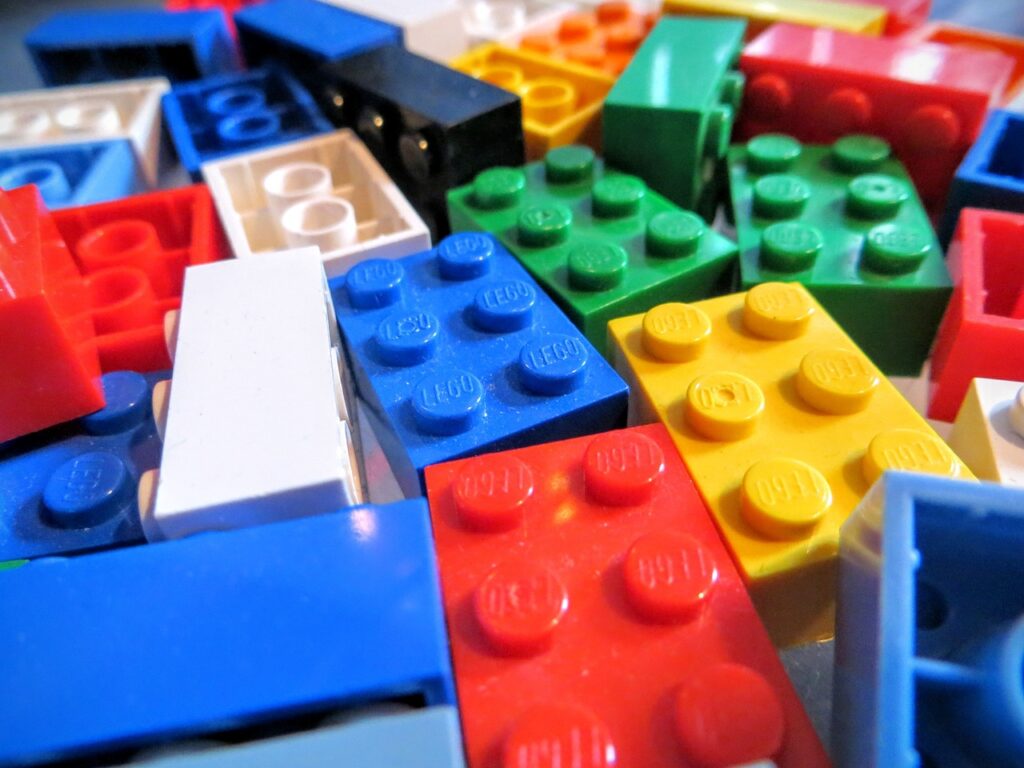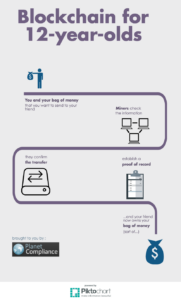Last week I met an old friend of mine, whom I hadn’t seen for a while. Obviously, we talked about what is going on in our lives, what we’re working on etc., so I told him about my obsession with Blockchain and how it is going to change everything. This friend of mine is rather tech-savvy, but he had to admit that he hadn’t heard of it, so I started out trying to explain the Blockchain phenomenon. I told him the usual, but I’m not entirely certain I did a great job, since when we left and he said he should look into it, he gave me the impression of being none the wiser.
It’s a common mistake to assume people must have at any rate heard of the things that concern us, when it is often quite the opposite. After all, the amount of topics we know absolutely nothing about exceeds the ones we have at least a basic understanding many times over. So, like a wise man once told me, “try to explain it to me as if I were a twelve-year-old”:
Well, imagine you had some money and you wanted to give it to a friend who lives far away. Traditionally, you would take it to a bank and the bank would send it to your friend (or the friend’s bank if you’re not clients at the same bank). The bank makes a note of the transaction in its book of transactions to record the transfer and to give proof of it since how would otherwise anyone trust the bank, right? Trust is a big problem when it comes to money since we would else give it to any stranger promising to do the deed, wouldn’t we? Another problem is that the bank usually in one way or another wants to be paid for the service of being the middleman. There is also the risk of the bank going bust before it can send the money to your friend. And lastly, it usually takes some time for the bank to process the transaction.
In computing that middleman is a centralised server that sits between you and a friend and transmits, for instance, an e-mail from your e-mail provider, e.g. Gmail or Outlook, to your friend. The main problem there is that if something happens to that centralised server, the information could be lost. You could also argue that it is slower since the information doesn’t go directly from you to the destination but somewhat takes a detour. The speed of your e-mail might not be of concern to you, but for other information like in the trading of securities milliseconds are important.
Well, so you are concerned about the bank going bust or you don’t want to pay them for this service. You could alternatively give the money to another friend who lives closer to that friend of yours and doesn’t mind taking the money directly or passes it on to someone else who does. These people do that because they suppose you would the same, so you basically join a group of people building a decentralised network. The problem is that there is always the chance that someone in that series of transactions unrightfully keeps a bit of that money or doesn’t live up to his promise before passing it on and we’re back at the trust aspect.
To translate this once more into the digital world, this is roughly the idea behind a peer-to-peer (or P2P) network. It also contains the problem that if someone in this network drops out you will have to find someone else to cover, which may result in loosing the information (or the money, if you will).
What to do now though? Some years ago someone invented the virtual currency Bitcoin, which is based on a technology called Blockchain. Bitcoin is a whole chapter for itself and for the sake of convenience we will simplify the description a trifle, simply assuming that Bitcoins are a currency like any other.
So, you own money in the form of Bitcoins, which you still want to send to your friend. Therefore you make it known (it’s a bit tricky to explain how that works in this context and we don’t want to focus on that at this point, just imagine that Bitcoin works through groups of people, too) that you have some money to transfer. Each Bitcoin comes with information about where it is coming from and a history of transactions it has been part in. This information is encrypted, that means it comes in a code. The information is publicly accessible since it is recorded not on one centralised server, nor on a handful of computers of the people in the network described above, but in a so-called distributed ledger, basically a notebook that registers all Bitcoin transactions and everyone has it in the network. This code is checked by volunteers in the network of people to verify that the information is correct, in other words confirming that you really own the Bitcoins you want to send to your friend. The people that check the information are called miners and once it is verified, they confirm the transfer and record a proof of purchase by updating the information adding another piece or block of information to the original code. In return, these people receive a small fee in the form of new Bitcoins, which are created and assigned to them for their service, “mining” new Bitcoins. Since the information is recorded on a public and distributed ledger and can only be altered if all parties involved in a transaction agree to it, it doesn’t matter if one of the computers in the Bitcoin community blows up, since everyone else has a record.
The beauty of Blockchain is also that the concept can be applied too many things: you could create an open decentralised database that records and gives any transaction involving value like money, goods, property, work or even votes. You could create a record whose authenticity can be checked by anyone in the community. Financial fraud could be significantly reduced since the information is publicly available. With only the need for an Internet connection, people in countries with limited access to financial institutions could overcome this obstacle. So-called smart contracts can execute themselves if the requirements of the agreement are met. Since all the information is accessible by anyone through the Internet, Blockchain has the potential to become a global decentralised source of trust, eliminating the need for expensive middlemen, being quicker and more robust than existing systems.
But let’s not get carried away and leave the opportunities of the technology faces and its obstacles for another occasion. After all, I was simply trying to do a better job than I did last week.
So, you will probably say that most twelve-year-olds don’t know what Bitcoin is (if you want to know, have a look here) or that some already struggle with the concept of money in general. You may also say that I haven’t simplified it or too much, left out important, but complicated things, or that twelve-year-olds shouldn’t know about Bitcoin at all. However, firstly, remember this was only an attempt to explain something on simplified terms, and secondly, don’t underestimate those twelve-year-olds. They might know more about it than you…

